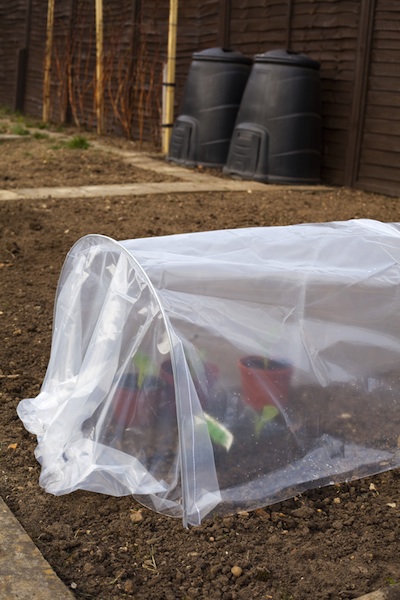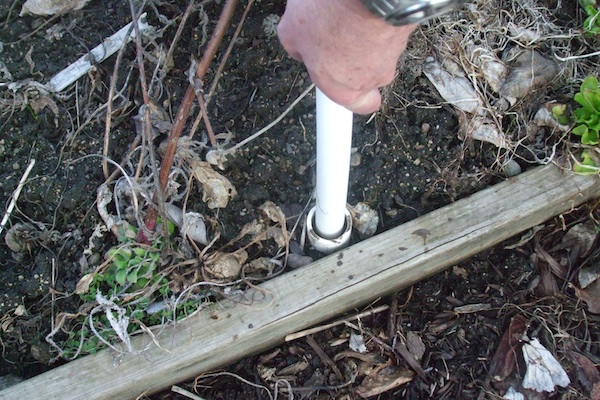
Remove the bottoms of water jugs to make cloches. Hold the jugs in place with a stick. (C) Fotolia/John Braid
As we grow more of our own food, we want to know how we can push the weather envelope and harvest carrots, spinach and other vegetables for Thanksgiving.
Protecting vegetables from the cold can be as simple as adding a little extra mulch around plants or as elaborate as a heated greenhouse. There are lots of steps in between, too.
Straw and leaves
Tuck loose straw or leaves around spinach and other leafy crops. Apply straw or leaves atop carrots, onions and radishes. Create a barrier around plants with straw bales or bags of leaves. Cover the open area with a row cover or thick clear plastic sheets.
Cloche
About as inexpensive as straw or leaves are cloches — inverted pots, plastic jugs with the bottoms cut out or glass domes. These protect smaller plants in spring and fall. Think of a cloche as a mini greenhouse. Remove unvented cloches during the day. Cloches are particularly useful in spring to cover seedlings and get a jump on the season.

A row cover, made of plastic fabric, will keep plants 5 to 10 degrees warmer than the outside ambient temperature. (C) Fotolia/Eag1e
Row Cover
A floating row cover is made of polyester or polypropylene. The fabric allows air, light and rain to penetrate. Hoops suspend the fabric 12 to 18 inches above the plants. It keeps the area under the cloth 5 to 10 degrees warmer than the ambient temperature.
Use PVC pipe or other similar material to form the hoops. Secure the hoop by placing the end in a slightly larger PVC pipe that has been pounded in the ground at the edge of the garden bed. If the hoop pipe is 1-inch diameter, use 1 ¼ or 1 ½ inch diameter pipe in the ground. Secure the material by stuffing it in the ground pipe with the hoop pipe.

Hold hoop house plastic or row cover fabric in place with PVC pipe. Insert a slightly smaller diameter PVC in a larger diameter PVC that’s in the ground. (C) Photo Jo Ellen Meyers Sharp
Hoop House
Use a couple of layers of opaque plastic, 4 to 6 millimeters thick, to create a hoop house, which can be about any height. The construction is the same as row cover. A hoop house usually extends the growing season by six to eight weeks in fall and spring.
Resources:
• Guerney’s Seed & Nursery Co.